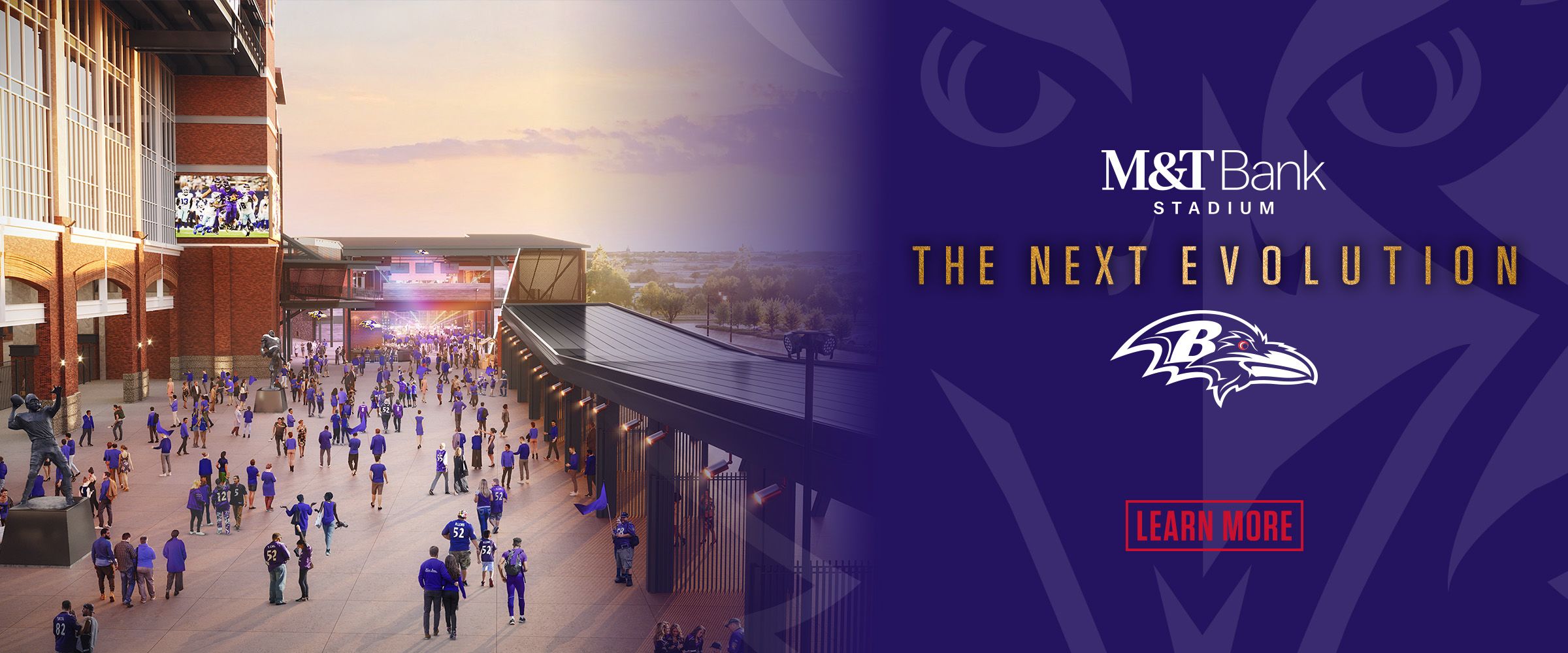Would the Ravens Really Draft an Offensive Tackle in Round 1?
Owner Steve Bisciotti said there's a "really good chance" the Ravens won't draft a defensive tackle in the first round this year.
But what about an offensive tackle?
With all the buzz about adding offensive playmakers this offseason, particularly at wide receiver and tight end, it seems the draft may be setting up a scenario that makes an upgrade in the trenches most likely.
"This is touted as a very good draft for offensive linemen and while it's not the Ravens' biggest need, they certainly could use to get a little stronger up front," The Baltimore Sun's Jeff Zrebiec wrote.
"This draft just doesn't feature a bunch of elite skill-position players on the offensive side of the ball, so nobody should be surprised if the Ravens’ best option at 16 consists of beefing up their offensive line."
The Ravens could lose three starters from last year's offensive line if center Ryan Jensen and guard/tackle James Hurst depart via free agency, and they release right tackle Austin Howard ($3 million cap savings).
All-Pro Marshal Yanda and promising third-year guard/tackle Alex Lewis will be back. If the Ravens add a first-round tackle, it could make for a beastly starting lineup.
"It isn't certain that veteran Austin Howard, who started all 16 games at right tackle in 2017, will be back, and the Ravens don't have a projectable young tackle behind him," Zrebiec wrote. "They'll take an offensive tackle at some point in the draft."
If Baltimore is looking to upgrade the right tackle spot, it would likely have to come via a high pick. The three offensive tackles projected to Baltimore in the first round are Texas' Connor Williams, Notre Dame's Mike McGlinchey and Oklahoma's Orlando Brown.
Here's Zrebiec's take on all three.
McGlinchey: "McGlinchey is widely considered the top offensive tackle in the draft. A first cousin of Atlanta Falcons quarterback Matt Ryan, McGlinchey is an NFL-ready offensive tackle with good athleticism, technique and instincts. At 6-8 and 312 pounds, he has room to add more bulk and strength, but he's polished enough to start immediately at either tackle spot. … It would probably be considered a coup for the Ravens if McGlinchey were still available when they're on the clock."
Williams: "Williams' pre-draft projections have been all over the map. He's been listed by some draft analysts as a top-10 pick, but others have him going much later in the first round. Still, he's almost unanimously viewed as a top-three tackle despite an underwhelming 2017 season during which Williams fought through injuries. At 6-6 and 320 pounds, he's a very good run blocker."
Brown: "The son of the former Ravens offensive tackle of the same name, is a mountain of a man. He's 6-8 and 360 pounds. There are some questions about his leverage and his technique, but Brown is widely considered one of the top three offensive tackles in the draft and an immediate starter at either left or right tackle. … This pick would be not only a sentimental one for the Ravens, but also a sensible one. The Ravens are excited about what they're building along the offensive line, but they do lack a young and talented offensive tackle who would bookend their front opposite Ronnie Stanley. The Ravens have done a relatively nice job developing young offensive linemen, and they'd have a lot to work with in Brown."
Zrebiec also gives his opinion on other projected picks at No. 16, so read the whole story here.
Ravens Knew When to Hold 'Em and Fold 'Em Last Year
An important part of the free-agency process is determining which free agents to keep and which ones to let walk.
Of course, teams would often want to keep all (or many) of their own free agents, but it doesn't work that way because of salary-cap restrictions.
Last year, the Ravens saw five starters – fullback Kyle Juszczyk, offensive tackle Rick Wagner, defensive end Lawrence Guy, wide receiver Kamar Aiken and guard Vladimir Ducasse* *– go elsewhere in free agency.
Ebony Bird's Chris Schisler looked back at Juszczyk specifically and wrote that the Ravens got it right.
"Juszczyk was a fan favorite and he was a good player," he wrote. "However, he was a luxury one that the Ravens could replace relatively cheaply."
The Ravens signed running back Danny Woodhead and leaned on Buck Allen to pick up Juszczyk's receiving role. Baltimore found undrafted rookie gem Patrick Ricard and converted him from defensive end to fullback to pick up the loss in blocking.
Juszczyk still had a strong year with the San Francisco 49ers, as he went to a second straight Pro Bowl, but he didn't receive quite as high of grades from Pro Football Focus (PFF).
This got me curious about how all the other players the Ravens let go fared in 2017. Only one departed free agent (Ducasse) had a better 2017 season than 2016.
Juszczyk (49ers)
2016: Plus-8.8 PFF grade – 37 receptions, 266 yards, 0 TDs; 5 rushes, 22 yards, 1 TD
2017: Plus-2.0 PFF grade – 33 receptions, 315 yards, 1 TD; 7 rushes, 31 yards, 0 TDs
Wagner (Detroit Lions)
2016: Plus-15.6 PFF grade – 14 starts
2017: Plus-10.9 PFF grade – 13 starts
Guy (New England Patriots)
2016: Plus-4.6 grade – 28 tackles, 1 sack
2017: Plus-2.2 grade – 58 tackles, 1 sack
Aiken (Indianapolis Colts)
2016: Minus-2.7 grade – 29 receptions, 328 yards, 1 TD
2017: Minus-15.4 grade – 15 receptions, 133 yards, 0 TDs
Ducasse (Buffalo Bills)
2016: Minus-8.3 grade – 8 starts
2017: 0.0 grade – 12 starts
Ignore Ravens' 2018 Strength of Schedule Ranking
It's a game we all play. You look at the Ravens' upcoming opponents and try to predict wins and losses.
Taking it one step further, those with the time and some basic math skills calculate the difficulty of every team's schedule based on last year's opponents' winning percentage.
That's what CBS Sports' John Breech did, and it turns out the Ravens have the league’s 12th “easiest” schedule in 2018. Easiest is in quotes because no NFL game is easy.
"What does this all mean?" Zrebiec asked. "Well, not a whole lot. It's always fun to look at the rankings, but it's been proved over and over again that a team's performance the previous season doesn't always portend what the team will do the next year."
Zrebiec makes a strong case, pointing to the 2016 records of the Philadelphia Eagles (7-9), New Orleans Saints (7-9), Los Angeles Rams (4-12) and Jacksonville Jaguars (3-13) as proof that too much shouldn't be drawn from past results. All four teams won their divisions in 2017 and the Eagles won Super Bowl LII.
The Ravens will play the Steelers, Bengals, Browns, Bills, Broncos, Buccaneers, Raiders and Saints at home next year. They'll face the Steelers, Bengals, Browns, Falcons, Panthers, Chiefs, Chargers and Titans on the road.
Seven of their 2018 opponents went to the playoffs, and more could next year.
"The Raiders underachieved, but they should be much improved under Jon Gruden. If the Broncos land an established quarterback, such as Kirk Cousins, they'll become an expected playoff contender given the strength of their defense. The Chargers won six of their final seven games in 2017 and should have increased expectations," Zrebiec wrote.
"Don't let the numbers fool you. By just about every other measure aside from 2017 winning percentage, the Ravens figure to be playing a rigorous schedule in 2018."
Quick Hits










